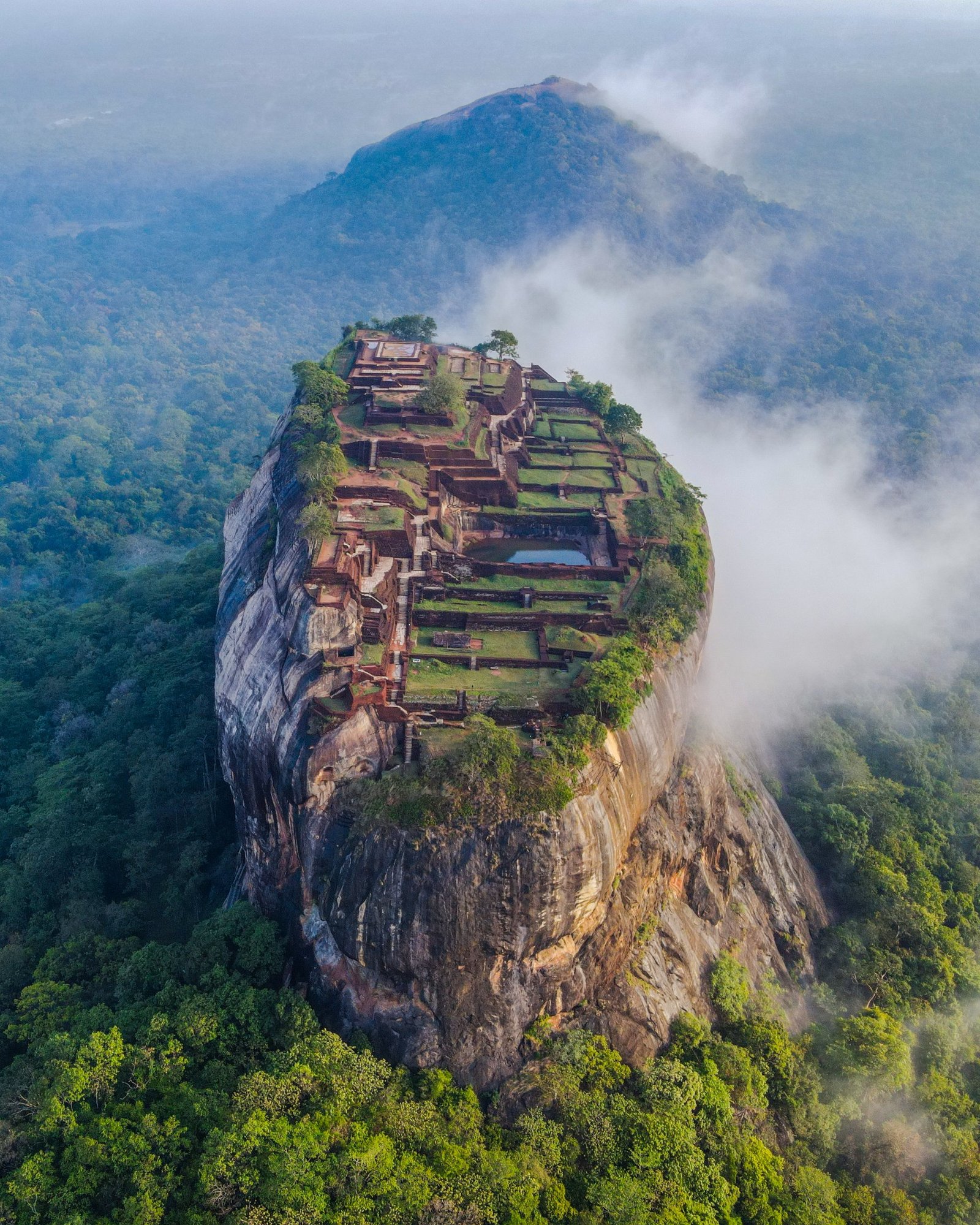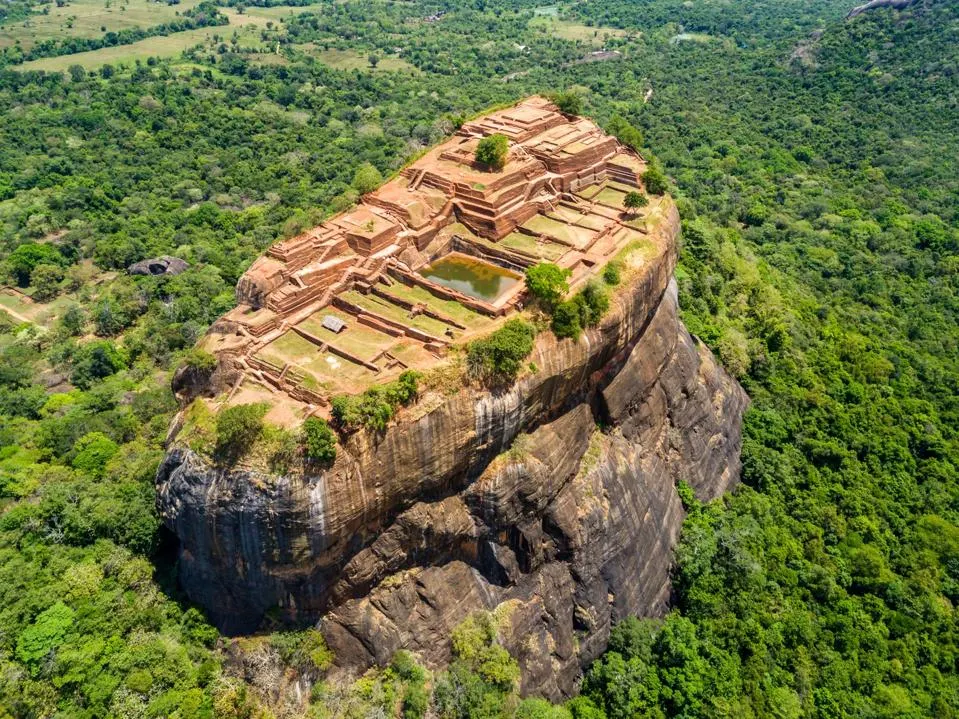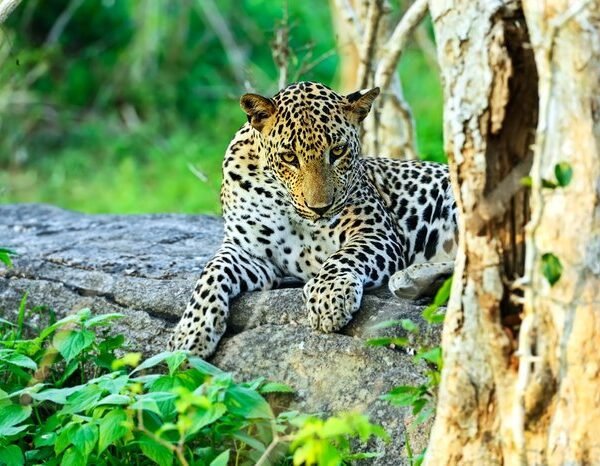When to go, what to do, and why you’ll love it
Why you’ll love it
This article contains affiliate links, which may earn us revenue
Sri Lanka’s full of surprises — the first being that it’s actually smaller than Ireland. The second is that it packs in so much in such modest dimensions. Safari, beach, culture — this is the island where you can dip in and out of each at whatever pace you choose. Its leopard count sits at around 700, temples number in the hundreds and you’ll lose count of the surf-ready stretches once you hit the south coast. Give yourself at least two weeks to see it all, with expert itineraries on Sri Lanka covering some of the biggest hitters. It still won’t be enough, of course.
Safari, beach, culture — this is the island where you can dip in and out of each at whatever pace you choose
So much of the appeal of Sri Lanka lies in the people. Many are cricket-mad and need no encouragement to share tales of the national team’s triumphs and defeats over a plate of steaming hoppers (pancakes). If you can stretch to it, hire a private driver, who’ll double up as a guide and a raconteur. They’ll take you to all the best markets and hidden botanic gardens, but it’s their stories you’ll remember as much as the big-name temples.
What to do
Sri Lanka’s cultural triangle, made up of five Unesco world heritage sites, is the most well-thumbed section of guidebooks for a reason — and the Temple of the Tooth in Kandy is at its heart. Come here to be swept along in a tide of pilgrims, buy orchid offerings (pooja) at the flower market and peer into the stupa-shaped casket that is said to house the Buddha’s tooth (spoiler: you won’t actually be able to see it).
Make time too for the lesser-known but equally intoxicating temples and statues in Kandy, such as the chalk-white Bahirawakanda Vihara Buddha that looms over the city. You’ll normally have it all to yourself, bar a few monks cloaked in saffron-coloured robes and the odd toque macaque practising acrobatics at his feet.
Take the train from Kandy to Ella and head to the misty heights of Sri Lanka’s hill country to see more of the country’s beauty. Fares will rarely set you back more than the equivalent of a few pounds — upgrade to first class to enjoy a cuppa from a china cup as you trundle towards the tea plantations. The views are incredible: plunging valleys, roaring waterfalls and neon-green tea fields studded with sari-clad pickers.
Listen out for the squeal of the brakes as the train rattles into Horton Plains National Park and hop off at the hill town of your choice. Nuwara Eliya, or “Little England”, is the most bizarre. Check into a hotel here and you could well mistake it for a corner of Hampton Court Palace with its boules courts, perfectly trimmed hedgerows and teak-clad bars. Choose Amaya Langdale for its infinity pool that seemingly drops off the side of the Earth. Hike to World’s End to survey the kingdom of tea fields that tumble down a near-sheer cliff perched 1,200m (3,900ft) above sea level. Be bamboozled by the teetering stacks of swedes and turnips on sale at the central market and send postcards from the Tudor-style post office. Just like in Britain, you’ll need a coat wherever you go here — temperatures can plummet and showers are frequent.
Hike to World’s End to survey the kingdom of tea fields that tumble down a near-sheer cliff perched 1,200m above sea level
Set a few days aside for a safari. Try Udawalawe, where around 500 wild elephants frequent its watering holes, Sinharaja Forest Reserve, whose canopies ring out with birdsong, or Yala National Park, which has one of the highest densities of leopards on the planet. It also provides sightings of water buffaloes warming their backs in the first rays of the morning sun, sloth bears breakfasting on the fruit-filled palu trees and mother elephants acting as lollipop ladies so that newborns can scamper across the road. If whales are on your must-spot list, head to Mirissa in February — it’s krill feeding time. When you’re done watching the waves, find yourself a shoreside spot. Whether it’s surfing some of the south coast’s breaks or seeing baby sea turtles hatch, Sri Lanka’s beaches have got something for every traveller.
Where to stay
There’s accommodation for every budget in Sri Lanka. If you’re on a shoestring, you can cosy up in a basic homestay for around £15 a night. Cash to splash? This is the place to do it. Five-star luxury-hotel stays are a fraction of what you’d pay in the UK; a night at the Shangri-La in Hambantota will cost around £180. If it’s luxe and serenity that you long for, look out for one of 15 hotels by Jetwing dotted across the island.
Five-star luxury-hotel stays are a fraction of what you’d pay in the UK
Spend your first night shaking off any jet lag in one of the coastal towns that are in easy reach of Colombo’s Bandaranaike International Airport. Negombo, for example, is just 15 minutes away. From here you can reach Kandy in around three hours. It’s the centre of the island and a prime staging post to explore any corner of Sri Lanka.
As you travel around, choose accommodation that epitomises particular areas — a sedate beachfront bungalow in Arugam Bay, a 19th-century mansion in the hill country, or a treehouse peering over the monkey-roamed canopies in Ginigathena.
Don’t miss
Galle, an old trading port on the southern tip of the island. Here you’ll find a mix of Dutch-colonial buildings, sleek boutiques and roadside stalls piled high with rainbow fish. Walk among the walled enclave of Galle Fort, built by Dutch merchants in the 17th century, and find the old prison in between the ramparts and waves. You’ll spy a clock tower, a lighthouse and usually local schoolboys perfecting their off breaks in the nearby cricket stadium.
A final tip: look out for the botanic gardens. Thanks to Sri Lanka’s temperate climate you’re rarely far from one. The 60 hectares of Peradeniya, once reserved for Kandyan royalty, are the best. Show-stealers of the 4,000-strong botanical collection include Burma bamboo, orchids, a sky-high Javan fig tree and the garden’s very own set of guards: nectar-guzzling fruit bats.
Best time to visit
Those exploring Sri Lanka should be aware of its two separate monsoon seasons. The main one impacts the west, southwest coasts and hill country from April to September, with rainfall being at its highest in June. The less severe monsoon hits the east coast from November to March and is wettest in December. Plan your days around the quietest, coolest points: hikes to the Sigiriya rock fortress should be taken at 7am to avoid the conga-like lines of tourists, and visit at 9.30am for the first offering of the day at the Temple of the Tooth.
This article was first published by Lucy Perrin on Friday January 5 2024, 09:00 am
Link to the Original Blog Post: https://www.thetimes.co.uk/travel/destinations/asia/sri-lanka/










